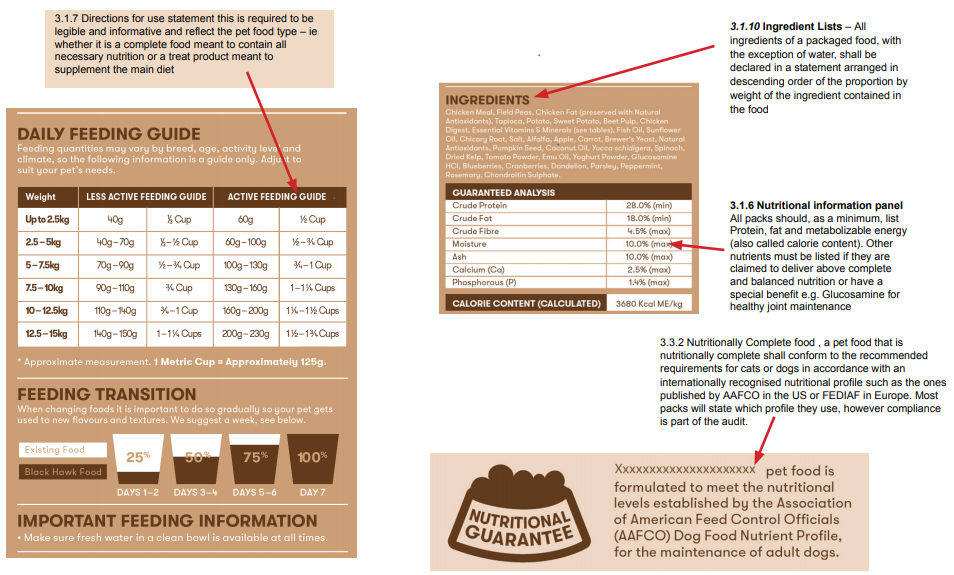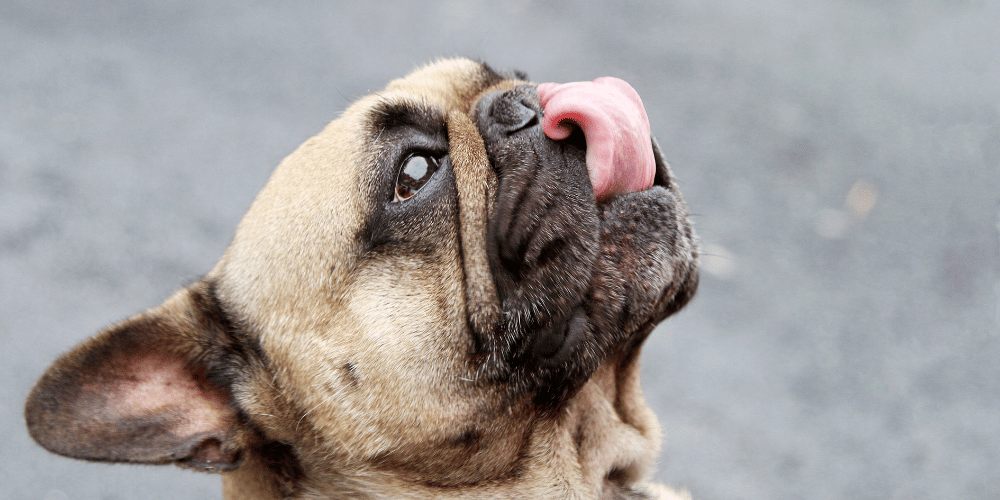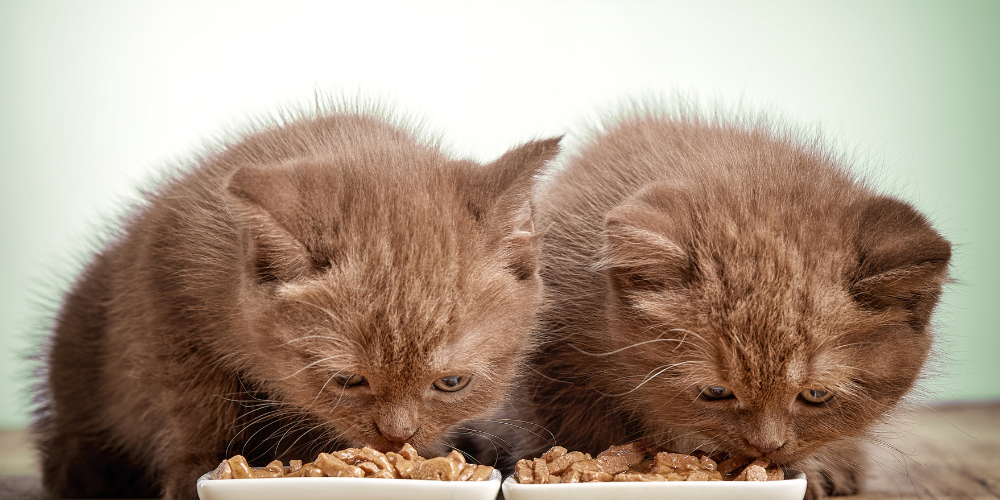
Wet, dry, kibble, canned, high protein, low phosphorus, senior, kitten or puppy, hypoallergenic, dental, breed-specific, kidney support, large breed, toy size, indoor, active, weight control, all natural, grain-free, skin care, low fat, joint health, glucose management, liver support, hairball control or raw?
I often feel like the lady in that old milk advertisement when I look at all of the different types of pet foods on the market these days!
With so many products out there, it can be hard to know where to begin to choose the best food for your pet. This article will look at the pros and cons of wet food versus dry food for both cats and dogs, and covers what you should consider when choosing a food for your furry friend.
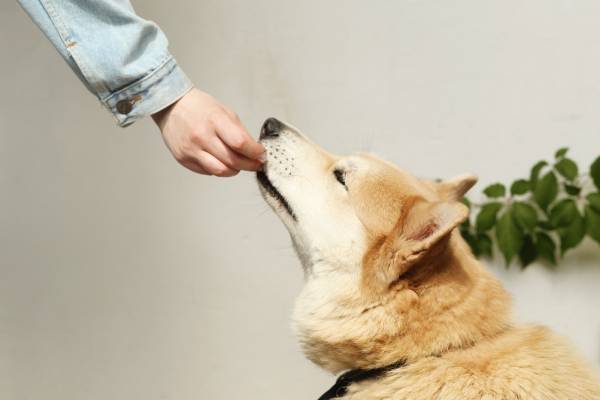
Quality Over Quantity
Choosing a quality food is probably one of the easiest decisions to make when it comes to selecting a food for your pet. A food that includes high quality ingredients will have greater nutritional value than a low-quality product which could lead to issues with your pet’s health. A higher quality food will also mean less mess for you to clean up and less smelly poos as well.

Consider the Following
When selecting a food, you should also consider the age and life stage of your pet, their overall health and any behavioural needs. Specialty foods for kittens and puppies are higher in fat and proteins to support growing bodies and senior foods are often lower in calories due to a decrease in exercise. There are also a variety of foods for specific health concerns including kidney and liver support, skin allergies, indoor cats, active dogs, diabetic pets and more.
Before swapping your pet to a specialty diet, it is suggested that you speak to your veterinarian as these diets often have altered levels of nutrients which could lead to adverse health effects if your pet does not consume a diet specific to their needs.
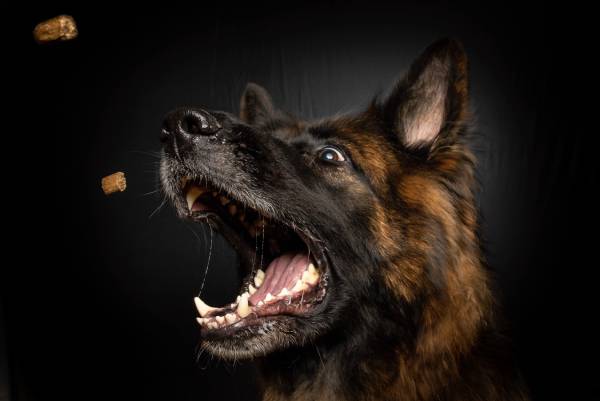
Pros and Cons of Dry Food
Dry foods have between 8-10% water content and are often higher in protein and/or fibre. Dry food is a favourite among dog owners with up to 70% of owners reportedly choosing to feed their dog dry food.

Pros and Cons of Wet Food
Wet foods such as canned food, rolls, trays or pouches contain anywhere between 60-85% water. Wet food is the preferred type among cat owners with 65% choosing wet food over dry for their furry friend.

How to Read Pet Food Labels
Reading pet food labels is the same as reading food labels on food prepared for humans. The first ingredient on the list makes up the greatest portion of the food by weight. The second on the list is the second greatest portion by weight, and so on. The label should also list any preservatives that have been used.
You should also check that the label mentions that the food is ‘complete’ and is not marked as ‘complementary’, ‘intended for occasional or supplementary feeding’, ‘treat’ or ‘snack’. A food marked as ‘complete’ has the correct balance of protein, carbohydrates, fats and vitamins that your pet needs. Other types are suitable to be given to your pet on occasion but must not make up the bulk of their food source.
The below image is a guide on reading pet food labels from the Pet Food Industry Association of Australia who work with pet food manufacturers and other stakeholders to promote standards of excellence in the pet food industry in Australia.
How to Transition Your Pet from One Food to Another
There are many reasons why you may be swapping your pet from one food to another. They may have reached a new life stage, such as maturing from a puppy or kitten to an adult or they may have recently received a diagnosis of a health condition that requires you to adjust their diet. Whatever the reason, the key to successfully switching foods is to take it slow.
You should allow 7 days to swap your pet from one food to another and up to 10 days for fussy eaters or pets with a sensitive stomach. Make sure to check the volume of food recommended on the label of the new product. It might have a different nutritional profile meaning you need to feed your pet more or less than their previous food. Refer to the graphic below for a guide to transitioning your pet.
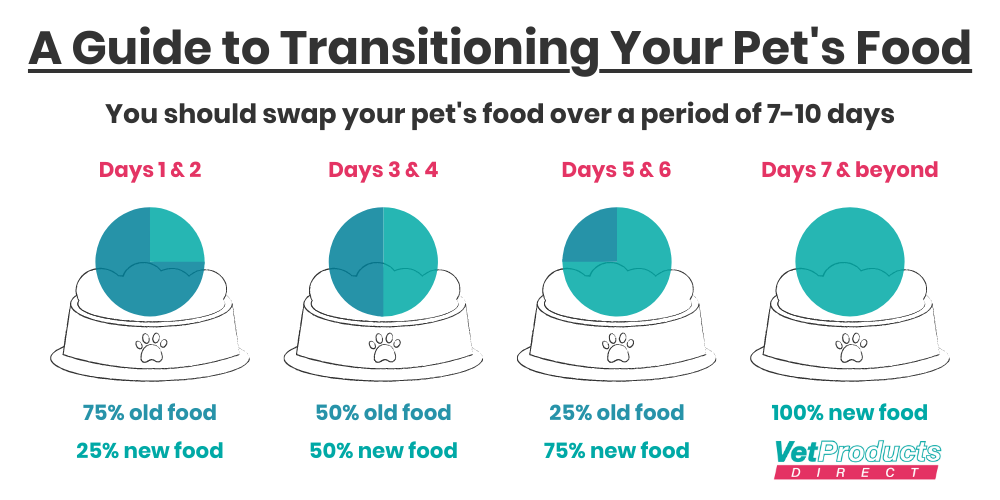
Is Grain-Free Food Safe?
In 2019, a report was released in America that uncovered a potential link between a grain-free diet and a rise in a heart condition in dogs. There were over 500 reports of dogs affected by the heart condition dilated cardiomyopathy (DCM) that had been consuming grain-free foods that contained alternative carbohydrate sources such as peas, lentils or potatoes. If you have any concerns about whether a grain-free diet is the right choice for your pet, your veterinarian is the best person to talk to.
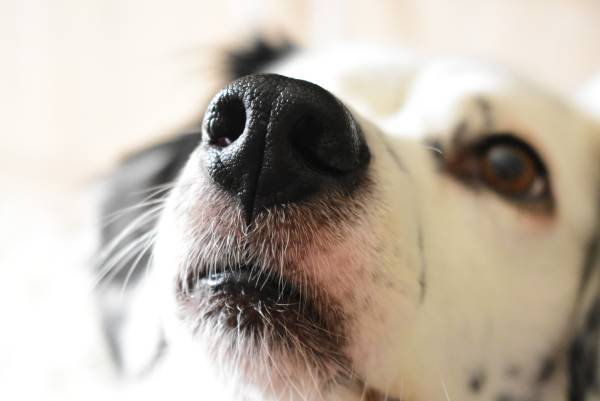
Raw Diets
Many owners are choosing to feed their pet a raw diet, but it is not recommended by many in the pet industry as it can be tricky to ensure you are feeding your pet the correct balance of nutrients. If you wish to swap your pet to a raw diet, you should speak to your veterinarian and do lots of research before making the switch to ensure you are making the right choice for your pet. Feeding a raw diet can require a lot of preparation and can be quite expensive as well.

Clear As Mud? Why Not Mixed Feed?
If you still aren’t sure whether wet or dry food is the right choice for your pet, why not feed them both? Mixed feeding is a great way to ensure your pet receives adequate amounts of water through the inclusion of wet food, as well as the higher levels of carbohydrates and fibre from dry food. Otherwise, you should speak to your veterinarian and see what they recommend for your pet.
View all food products for dogs here
View all food products for cats here

